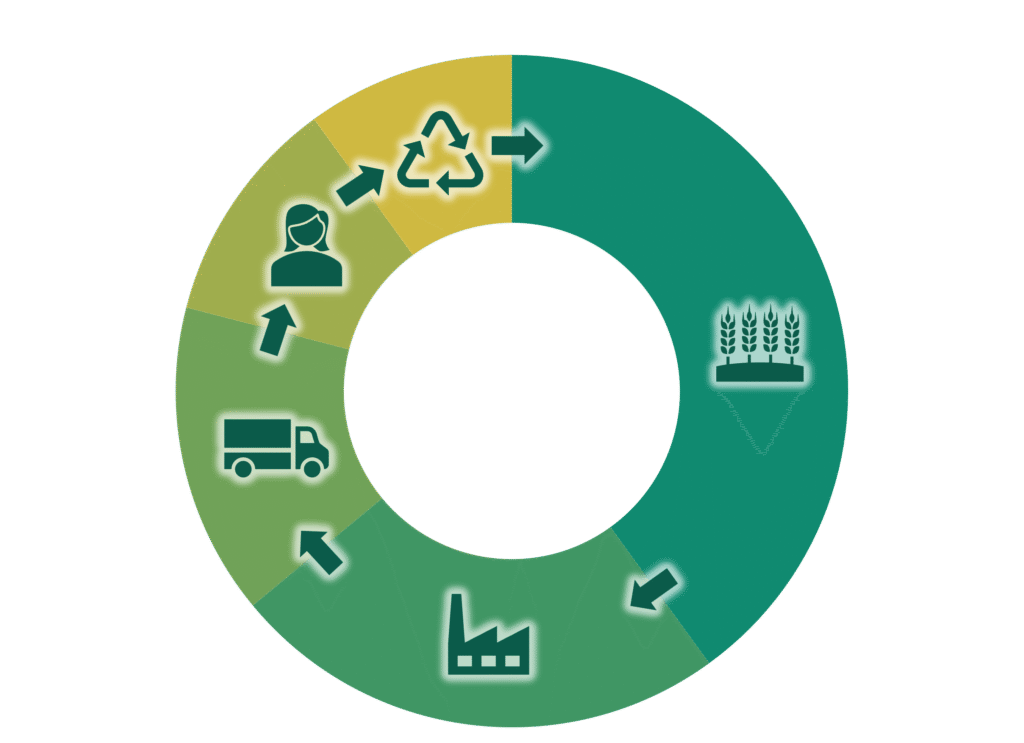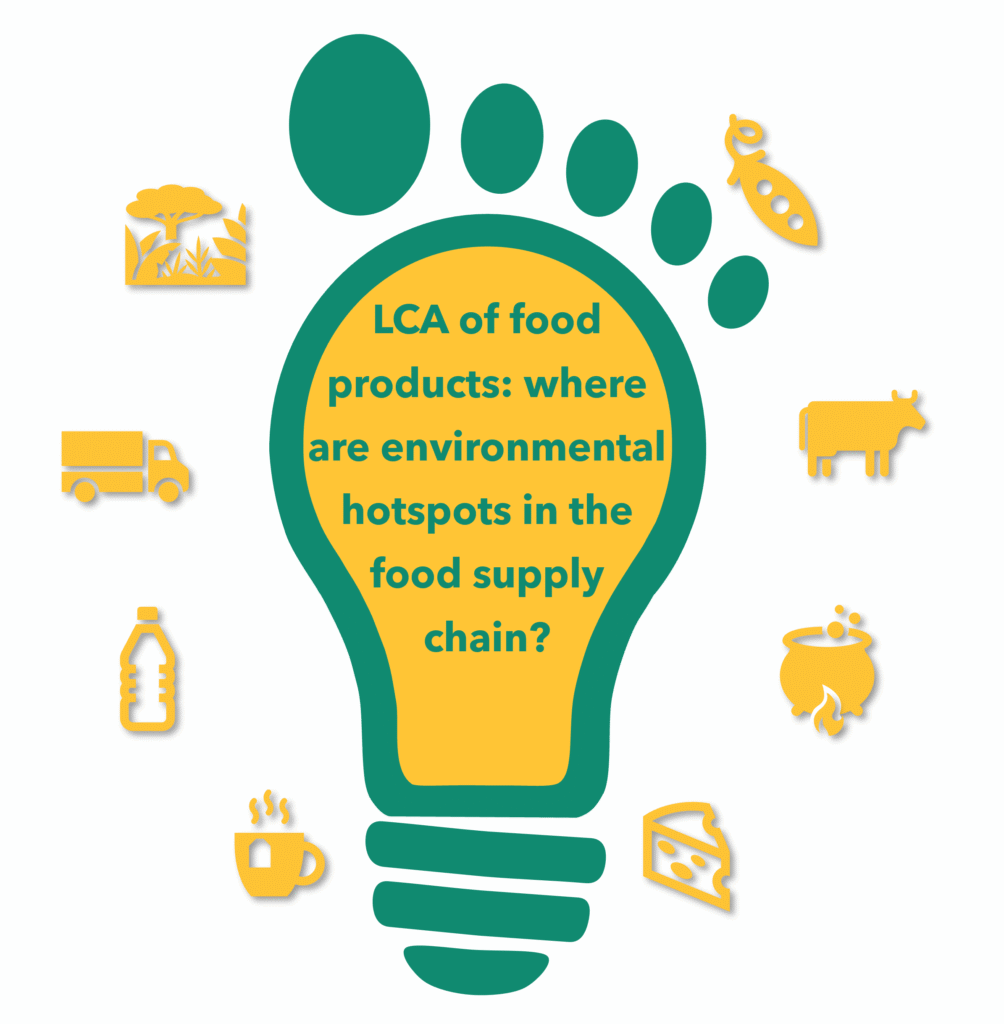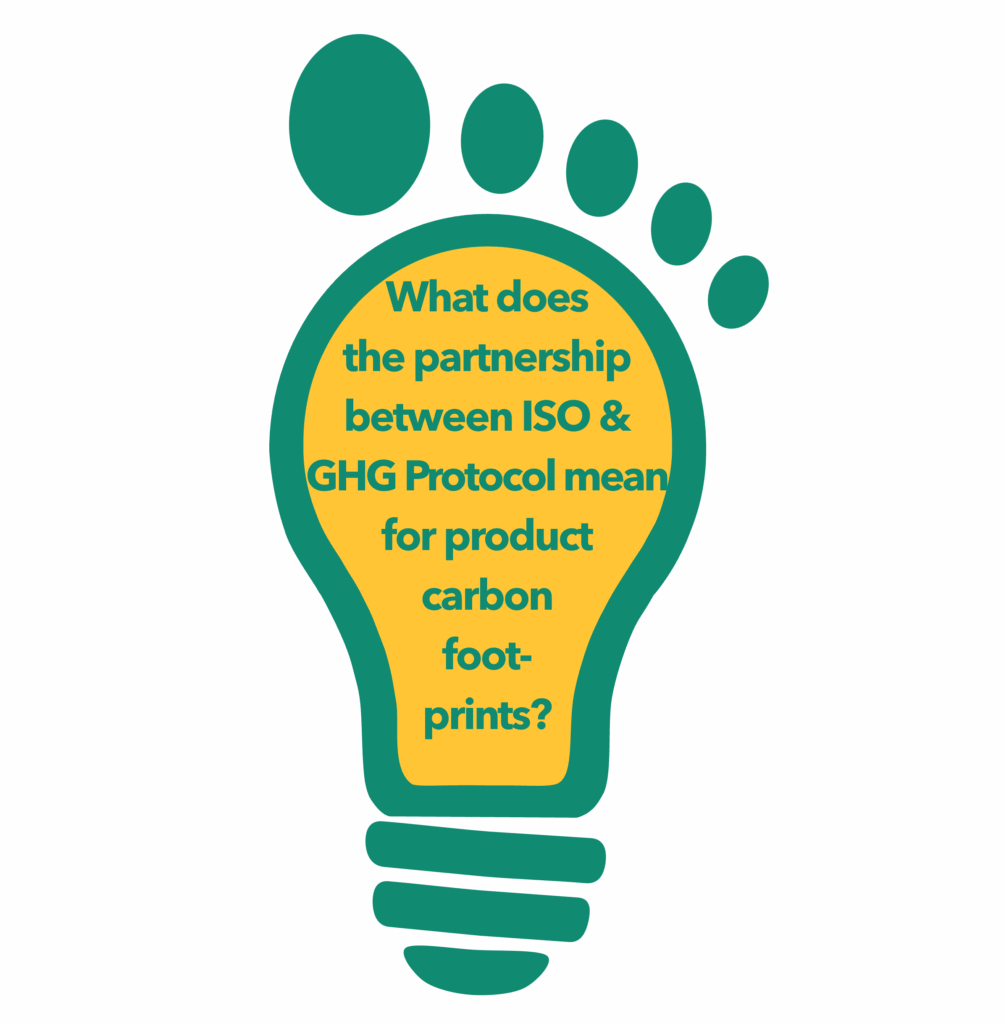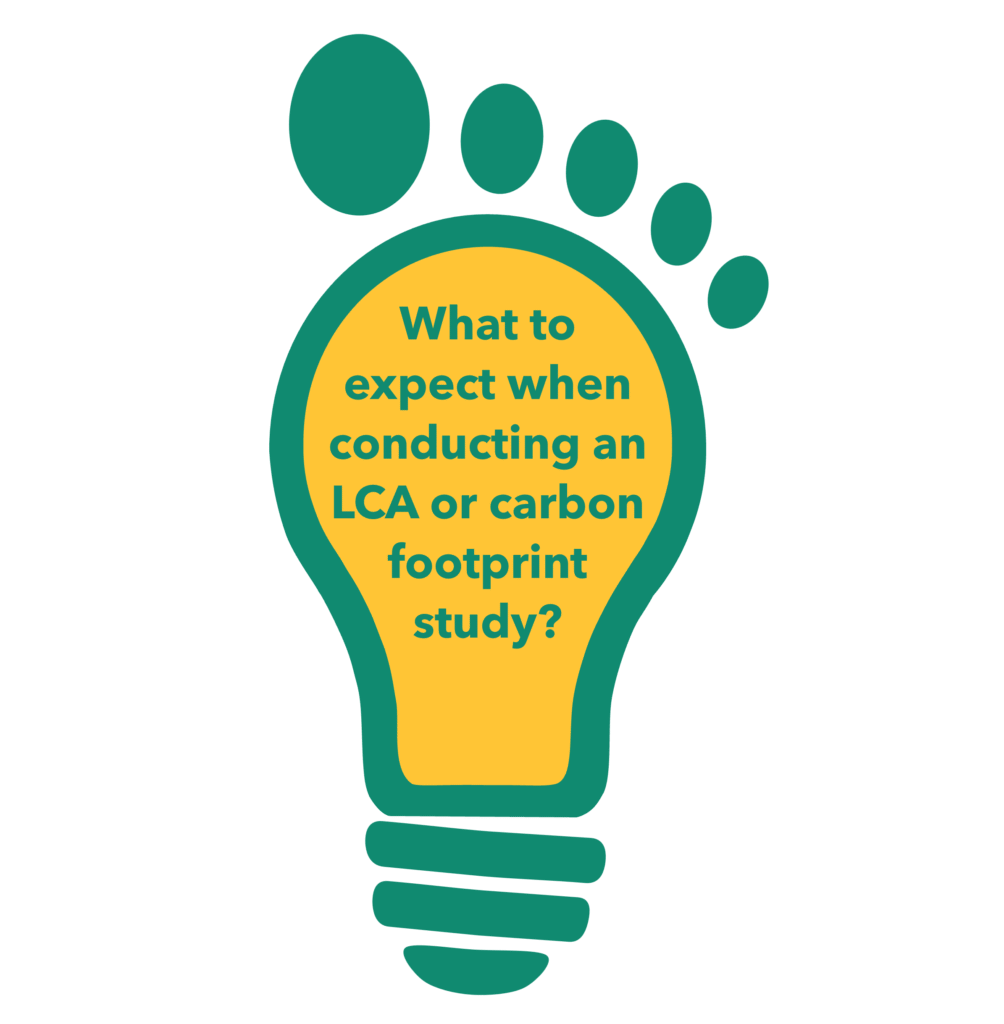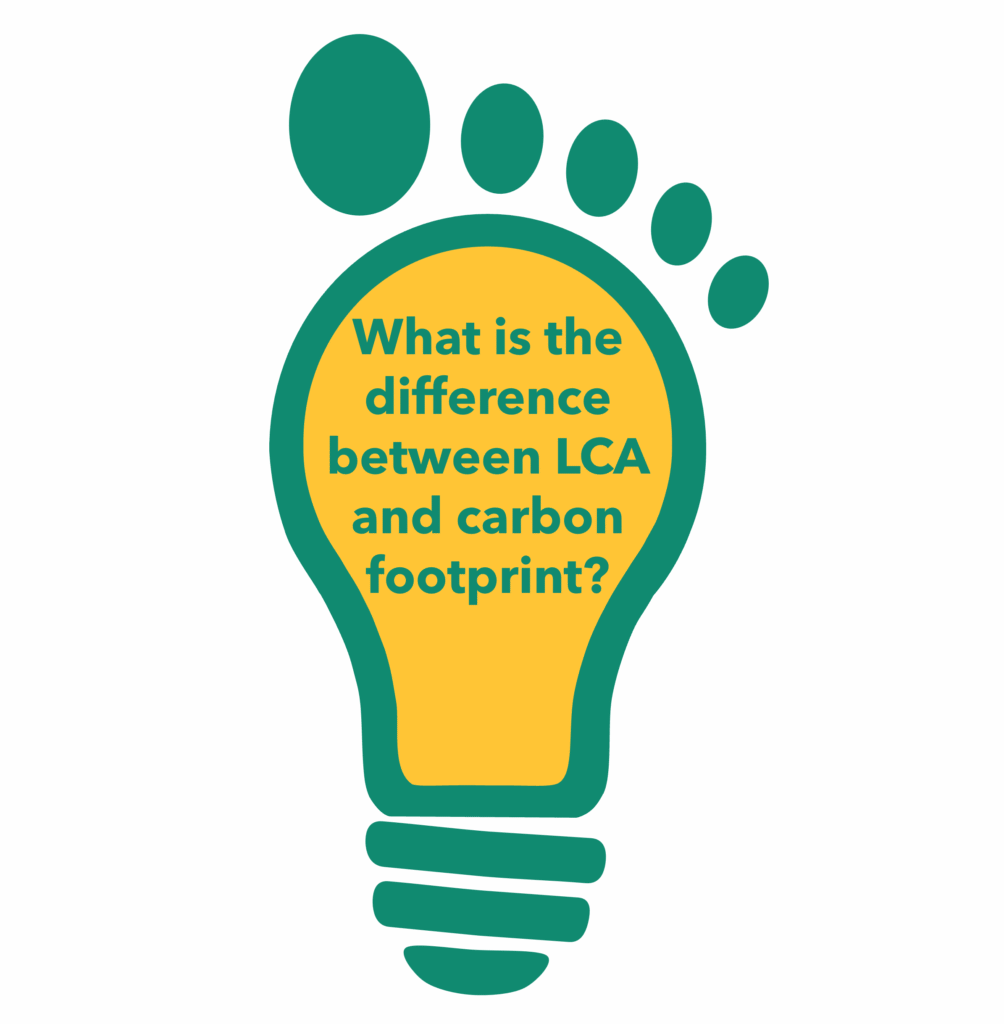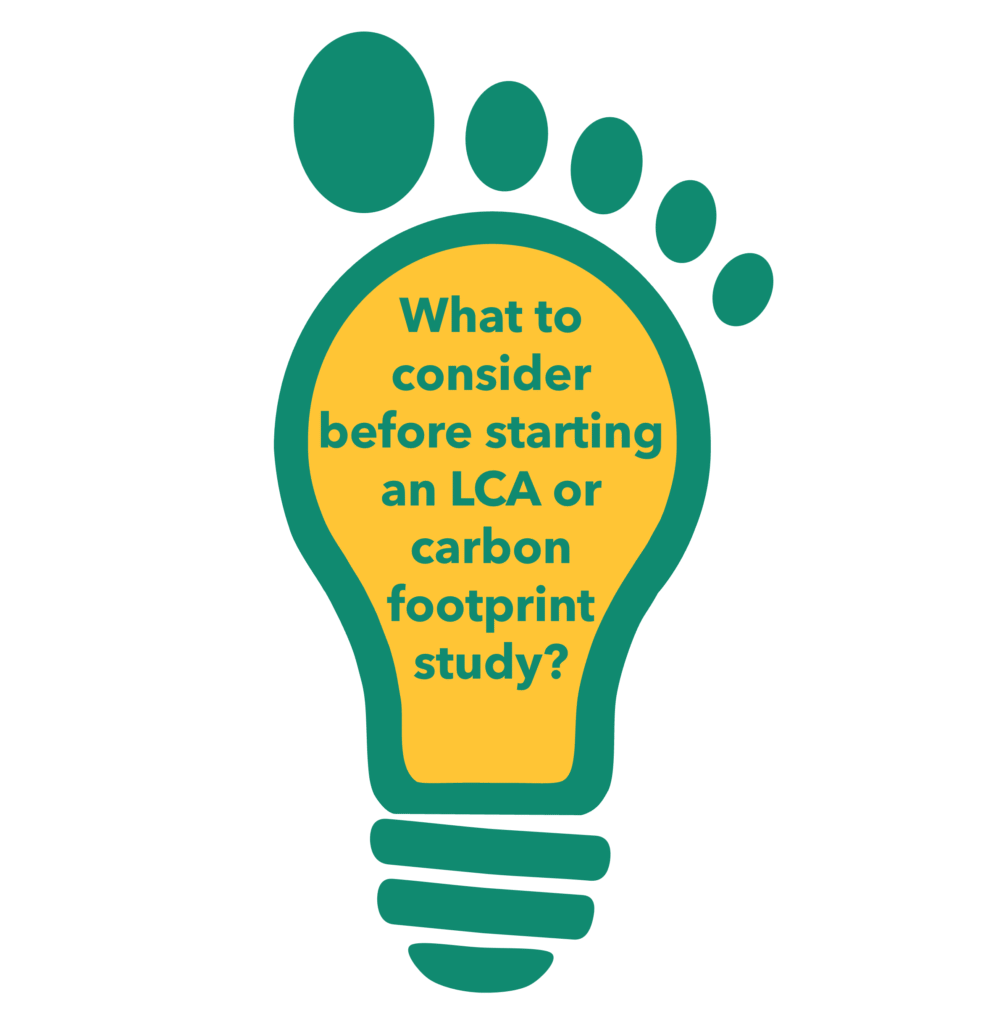life cycle assessment and footprinting knowledge
Insights
Introduction to LCA
What is life cycle assessment?
Life Cycle Assessment (LCA) insights are increasingly used by companies and organizations to inform sustainability strategies, guide product development, support sourcing decisions, and substantiate environmental claims in communication and reporting. By mapping out each stage of this life cycle, LCA reveals where and how environmental impacts occur, helping identify so-called “hotspots” and opportunities for improvement.
In below article, we introduce the fundamentals of LCA, explore what kind of insights it offers, explain how impact categories work, walk through the LCA process, and discuss key international standards that shape best practice.
Understanding Life Cycle Assessment (LCA): A critical tool for quantifying your (food) product’s environmental impact and sustainability
Life Cycle Assessment (LCA), also referred to as life cycle analysis or (product) environmental footprinting, is a systematic, science-based method for evaluating the environmental impacts associated with all stages of a (food) product’s life cycle – from raw material extraction through production, processing, distribution, use, and end-of-life. LCA evaluates multiple environmental indicators. In addition to the widely known carbon footprint (climate change), it also considers impact categories such as water use, land use, eutrophication, and resource depletion. By offering detailed insight into a product’s environmental footprint, LCA enables companies to identify where impacts occur along the life cycle (hotspots) and…
Environmental footprint of agriculture and food products: where along the food supply chain is the environmental impact highest? A hotspot analysis based on life cycle assessment (LCA) and carbon footprint studies
The environmental footprint of food products is a complex, yet fascinating topic. With such diversity in types of food, production methods, countries of origin, and preparation techniques, the environmental impact can vary significantly between food products – even among products within the same category. So, what determines the environmental footprint of a food product? Insights from Life Cycle Assessment (LCA) and carbon footprint studies can help answer this in a structured and science-based way. In this article, we walk through the main stages of a product’s life cycle and highlight factors that influence the carbon footprint and broader environmental impact…
FAFQ
Frequently Asked Footprinting Questions
Curious about how to get started with footprinting? Wondering whether to choose a carbon footprint or a full LCA? In this section, we answer common questions about environmental footprinting—covering key concepts, practical considerations, and the differences between various methods. Whether you’re new to footprinting or looking to deepen your understanding, our articles offer clear, accessible guidance to help you make informed decisions. We will keep adding more FAFQs, let us know if you have a specific footprinting question that you would like to see answered!
What does the announced partnership between ISO and the GHG Protocol mean for carbon footprinting at product level?
With the recent announcement that ISO and the GHG Protocol will harmonise their standards, the landscape of carbon footprinting is about to change. The collaboration will bring together the ISO 1406x family of standards with the GHG Protocol’s Corporate Standard, Scope 2 Guidance, Corporate Value Chain (Scope 3) Standard, and Product Standard. At product level, this particularly affects the ISO 14067…
Conducting a life cycle assessment (LCA) or measuring a carbon footprint: how it works and what to expect
Are you considering to conduct a Life Cycle Assessment (LCA) or calculate a carbon footprint to map out the environmental impact of your product? In this article, we explain how the process works and what to expect along the way. 1. Preparing for a life cycle assessment (LCA) or carbon footprint study Before you get started, it’s important to reflect on…
What is the difference between Life Cycle Assessment (LCA) and Carbon Footprint?
Are you considering to measure the environmental impact of your product or service, but unsure whether to go for a carbon footprint or a life cycle assessment (LCA)? In this article, we explain what both approaches entail, how they differ, and what factors to consider to make sure you choose the method that best aligns with your goals. Carbon footprint Carbon…
What to consider before starting an LCA or carbon footprint study for agri-food products?
Are you thinking about assessing the environmental footprint of your (food) product? Whether you’re aiming to improve sustainability, support marketing claims, or meet reporting requirements, a Life Cycle Assessment (LCA) or carbon footprint study can be a powerful tool. However, there are a few important questions to consider before getting started. The answers will help define the scope, data needs, and…

